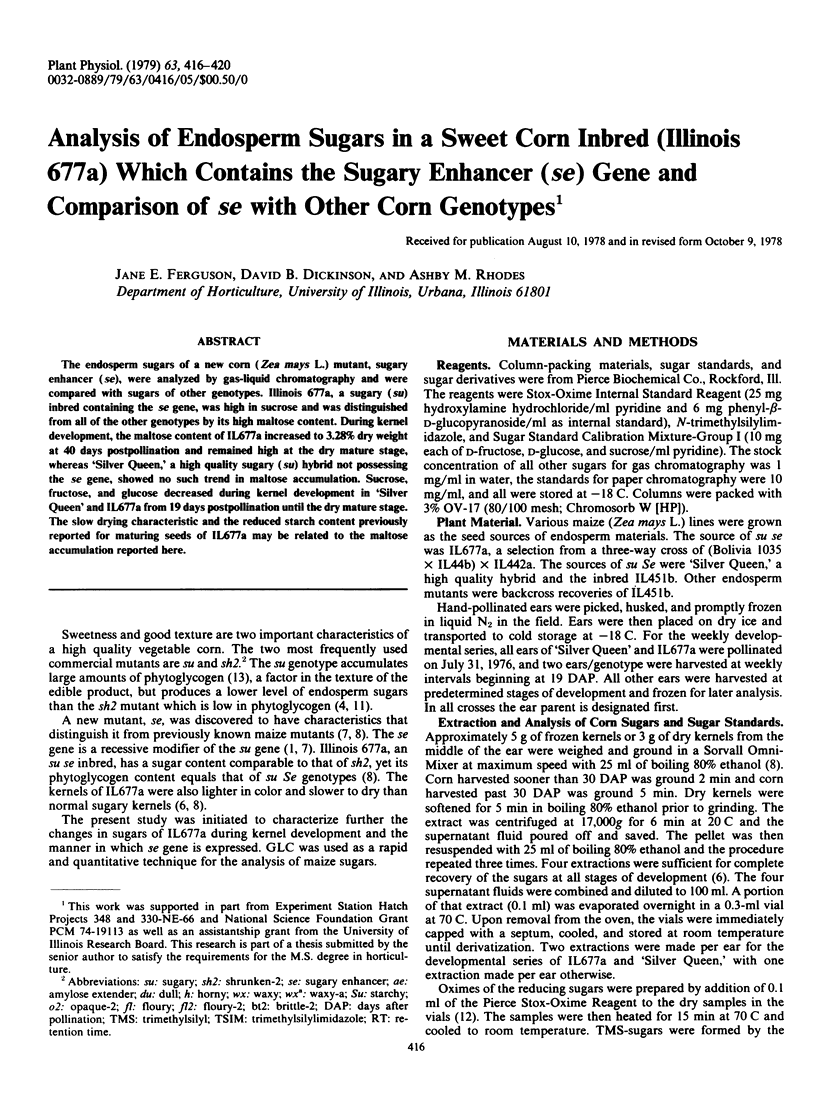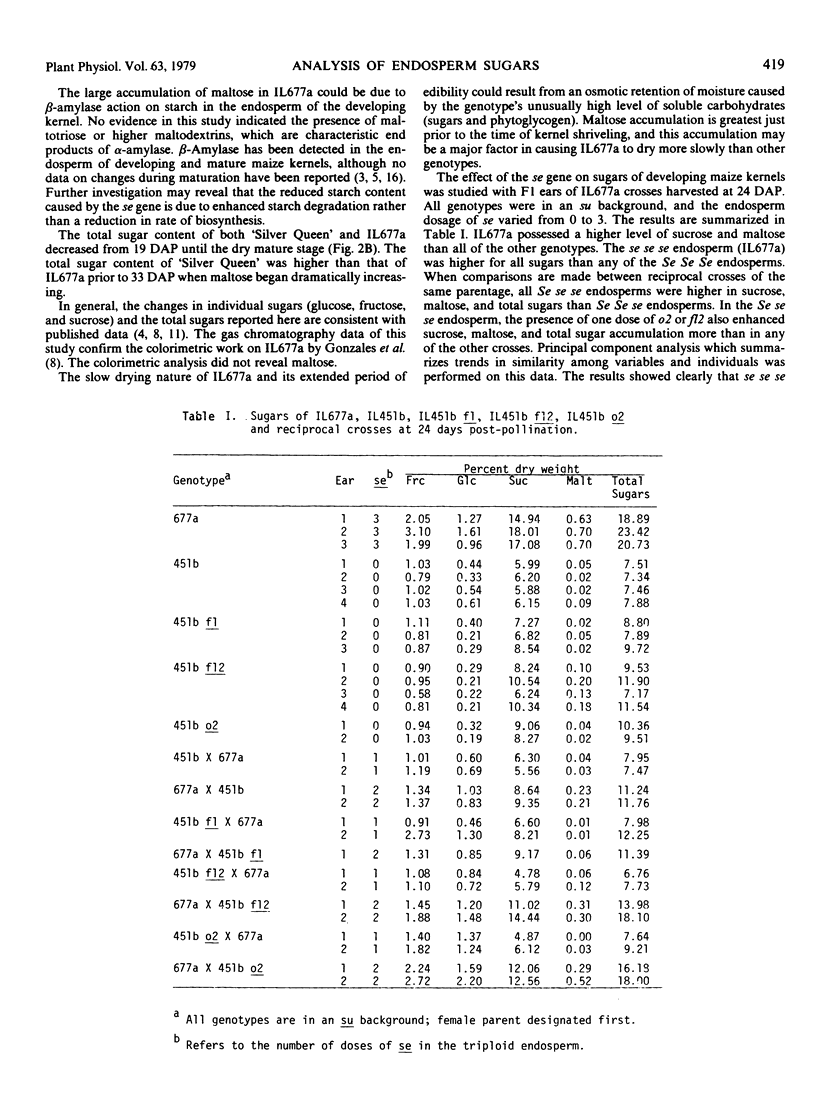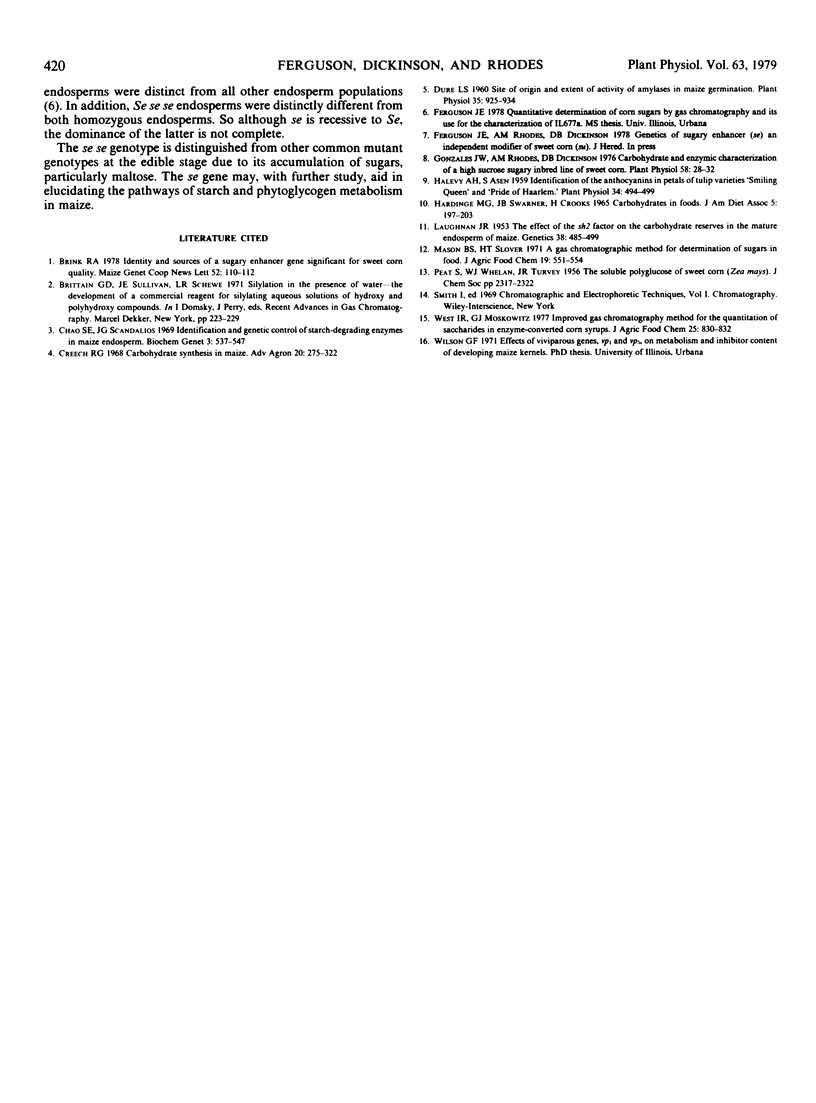Abstract
The endosperm sugars of a new corn (Zea mays L.) mutant, sugary enhancer (se), were analyzed by gas-liquid chromatography and were compared with sugars of other genotypes. Illinois 677a, a sugary (su) inbred containing the se gene, was high in sucrose and was distinguished from all of the other genotypes by its high maltose content. During kernel development, the maltose content of IL677a increased to 3.28% dry weight at 40 days postpollination and remained high at the dry mature stage, whereas `Silver Queen,' a high quality sugary (su) hybrid not possessing the se gene, showed no such trend in maltose accumulation. Sucrose, fructose, and glucose decreased during kernel development in `Silver Queen' and IL677a from 19 days postpollination until the dry mature stage. The slow drying characteristic and the reduced starch content previously reported for maturing seeds of IL677a may be related to the maltose accumulation reported here.
Full text
PDF




Selected References
These references are in PubMed. This may not be the complete list of references from this article.
- Chao S. E., Scandalios J. G. Identification and genetic control of starch-degrading enzymes in maize endosperm. Biochem Genet. 1969 Dec;3(6):537–547. doi: 10.1007/BF00485475. [DOI] [PubMed] [Google Scholar]
- Dure L. S. Site of Origin and Extent of Activity of Amylases in Maize Germination. Plant Physiol. 1960 Nov;35(6):925–934. doi: 10.1104/pp.35.6.925. [DOI] [PMC free article] [PubMed] [Google Scholar]
- Gonzales J. W., Rhodes A. M., Dickinson D. B. Carbohydrate and enzymic characterization of a high sucrose sugary inbred line of sweet corn. Plant Physiol. 1976 Jul;58(1):28–32. doi: 10.1104/pp.58.1.28. [DOI] [PMC free article] [PubMed] [Google Scholar]
- HARDINGE M. G., SWARNER J. B., CROOKS H. CARBOHYDRATES IN FOODS. J Am Diet Assoc. 1965 Mar;46:197–204. [PubMed] [Google Scholar]
- Halevy A. H., Asen S. Identification of the Anthocyanins in Petals of Tulip Varieties Smiling Queen and Pride of Haarlem. Plant Physiol. 1959 Sep;34(5):494–499. doi: 10.1104/pp.34.5.494. [DOI] [PMC free article] [PubMed] [Google Scholar]
- Laughnan J. R. The Effect of the sh(2) Factor on Carbohydrate Reserves in the Mature Endosperm of Maize. Genetics. 1953 Sep;38(5):485–499. doi: 10.1093/genetics/38.5.485. [DOI] [PMC free article] [PubMed] [Google Scholar]


